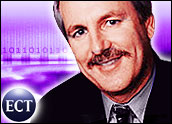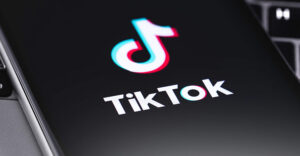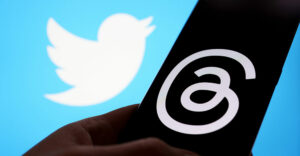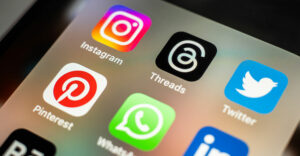
Summer is typically a quiet time, as the industry takes a breath prior to the back-to-school rush.
This year was a bit of an exception, with the launch of the Apple iPhone, which may get credit for revolutionizing much of the tech and consumer electronics (CE) industry. While sales are well below expectations, expectations were set unreasonably high and this phone is setting sales records for its class.
Then there’s Hewlett-Packard. As a complex company, HP is actually executing at a higher level than Apple and the rest of the technology and CE market are globally, and I think it’s time to explore why.
Advanced Micro Devices is undergoing a transition — a painful one — as it positions for the next decade and makes a run for market leadership. It’s trying to redefine the market using a strategy that, for its industry, is not that dissimilar to what Apple did with the iPod and iPhone; and that is the framework for this week.
As always, we’ll close with the product of the week, in this case Swivel, a kind of Web 2.0 version of VisiCalc that could be one of the most useful tools on the Web for folks in my business.
iPhone: Reality Sets In
The iPhone is a success by any real measure. However, there are two major problems with this first-generation product.
The first is AT&T and the part of the offering that Apple doesn’t control. AT&T has been cited as the primary reason people return the iPhone. The combination of being unable to get people into service in a timely way and how they treated the customers who were left waiting was one of the worst execution practices I’ve ever seen.
AT&T Critics Vindicated
Apple wasn’t able to help much, and while this gave both companies a chance to see how well customers could be treated by both companies, neither took it, and a lot of folks feel vindicated in their belief that AT&T — which for most was Cingular — is a company to be avoided.
The other problem — and likely more problematic if the iPhone is going to continue to set an industry pace — was that expectations were overset for how many iPhones could be sold.
This set a foundation for the device to set sales records and still be seen as a market failure. Apple’s valuation paid the price when AT&T announced how many iPhones had been attached to its service — a number that was a fraction of what folks expected to hear.
Luxury or Value?
Realize that the iPhone costs between twice and five times what competing smartphones cost. This makes it the equivalent of a luxury product.
No matter how great a product is, price forms a barrier to entry and you simply can’t expect a luxury-priced product like the iPhone to sell in the kinds of volumes a value-priced product can sell.
However, margins are vastly better with luxury products than they are with value offerings, and Apple is actually selling at volumes that are closer to value products with a luxury offering. That’s a success by any measure.
Now, the big test will be what happens when Apple brings out the similar iPod. If this product is WiFi-enabled, has everything but the phone features the iPhone has and is priced similar to the iPhone (which is likely), my expectation is that it will outsell the iPhone.
Time Will Tell
The lesson, in this instance, would be that buyers continue to prefer devices that are optimized for a distinct use over all-in-one products.
On the other hand, if the iPhone outsells the iPod, the reverse will be true.
I’d bet on the former, but the latter could clearly be true. I still think this may be Apple’s Pearl Harbor, and we’ll see in the fourth quarter. Apple is executing at an incredible level, and Apple employees — all of them — have a reason to be very proud of what they have accomplished.
Why HP is Winning: Strategic Acquisitions
Speaking of doing very well, HP is fast becoming the gold standard, replacing IBM at the top of the high-technology heap. Each and every division that HP has is now executing well against its best-in-class contemporaries, and now HP is moving to try to recreate the PC. If they are successful, in a decade or so, we may think of the personal computer (assuming we even call it a PC) as the HP PC, much like we generically used IBM PC.
It is interesting to note that while Scott McNealy of Sun and Larry Ellison of Oracle both actually had a great idea when they first coined the term “thin client computing,” neither realized that the technology they needed for their idea simply had not been created yet. That could be because they fundamentally didn’t understand the PC market or customers.
They did, however, lay a foundation that HP is now building on with the now-dominant thin client position (once the Neoware acquisition is complete) and Blade PCs.
Unique Offering
HP is now the only vendor with a complete family of next-generation PC platform products, and with Neoware they even get a mobile thin client offering also unique to any of the major vendors.
If you looked at the technologies I spoke of last week, the Zonbu and Mojopac offerings, if you were to blend them together you’d see what I think the market is trying to force the vendors to build. HP is likely closer to both seeing and executing this future than any other company.
If we layer on top of all of this Opsware, a tool that was successful against incredible odds, which evidently provides solid financial and reliability benefits to distributed environments, you have a foundation for change.
Products like Opsware’s sell largely through testimonials, and those testimonials must be stunning for the company to do as well as it did given its history and size. HP now removes the negatives and wraps the solution with HP’s brand and resources; I’d expect Opsware’s solutions to explode as a result.
Leadership Is the Reason
In the end, the reason HP is executing at this level is because its CEO Mark Hurd and Chief Strategy Officer Shane Robison are forcing HP to compete as HP, rather than the more typical strategy of allowing the divisions to free-float like little separate companies.
It is doing this by actually focusing more on driving synergy than on promoting itself or excessively focusing on schmoozing with financial analysts, customers, or peers. If you look at the CTO organization alone, which effectively forces a connecting function between the divisions, you see something unique and powerful.
In short, this isn’t the old HP. This isn’t Carly Fiorina’s HP, and this isn’t Hurd’s either. This is HP’s HP, and it is through the collective efforts of lots of people — but particularly Robison and Hurd — that are making today’s HP into one of the most powerful companies in the segment.
AMD’s Tech Game Plan
AMD had its financial analyst meeting last week, and its executives walked us through the future they are imagining. Much of the true advantage AMD will see from the technologies they spoke to us about won’t happen until 2009, and the company’s path to this goal won’t be easy.
However, if successful, AMD will help to redefine the high tech and consumer electronics markets and make future iPhone-like devices, future consumer electronics, and future PCs vastly more capable and power efficient then they are today.
Critical to this success is persuading a broad cross-section of vendors to reinvest in their own brands and break away from the Intel marketing co-funding dollars.
Who’s Inside?
If you look, you will notice far fewer advertisements from vendors like HP, Toshiba and Lenovo, which have the Intel co-brand. By removing this connection, they not only help the vendors better focus potential buyers on the vendor’s own brand, but remove one of the big barriers PC vendors had with regard to using AMD over Intel.
This opens the door to AMD’s long-term strategy to compete broadly with Intel and others to redefine the overall performance of devices ranging from PCs to smartphones, gaming systems and more traditional set-top boxes.
The two platforms to watch are Fusion and Xilleon. Fusion blends graphics and processing power into an ever-more integrated offering that can supply ever-more performance at ever-lower power and with ever-smaller packaging.
Xilleon extends this to a full system, extending well beyond graphics and processing to really drive the vastly more appliance-like future to which we are headed.
Intel isn’t kicking back and is clearly executing at a high level of excellence. AMD can’t catch Intel from behind, and is trying to take a shortcut to the future. While risky, it is likely one of the few paths that could assure both survival and success.
Product of the Week
Swivel is one of a new class of Web 2.0 products that allows you to do things that typically you would have only done on a PC.
Basically, it is Excel light online. You upload or enter your statistics and the online application gives you a large number of choices based on what it sees in those statistics, and you then get a rapid visual representation of the result, which you can share with others or embed in your own Web page.
A great example chart is one comparing Apple’s stock price to the number of iPods sold. In effect, it supports the argument that Macs only pay the bills, and iPods are what the company is about.
It is kind of fun just to mess around with numbers visually and see what conclusions you can draw from data. Given how often we are fooled when others do this, it could also result in some better decisions.
Rob Enderle is a TechNewsWorld columnist and the principal analyst for the Enderle Group, a consultancy that focuses on personal technology products and trends.




















































